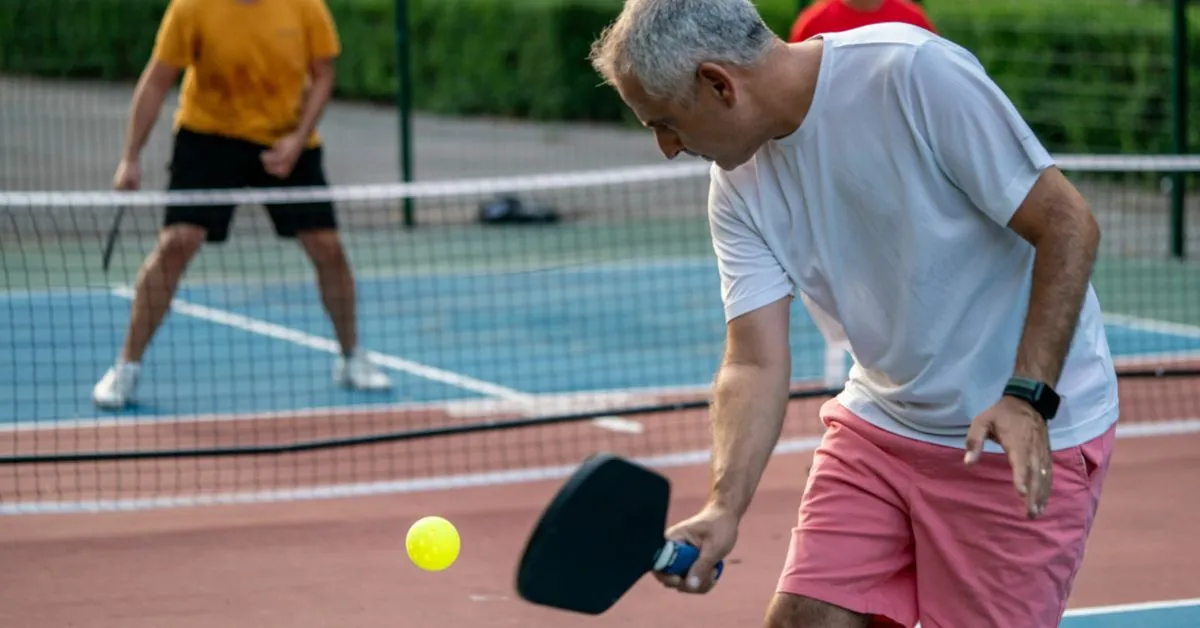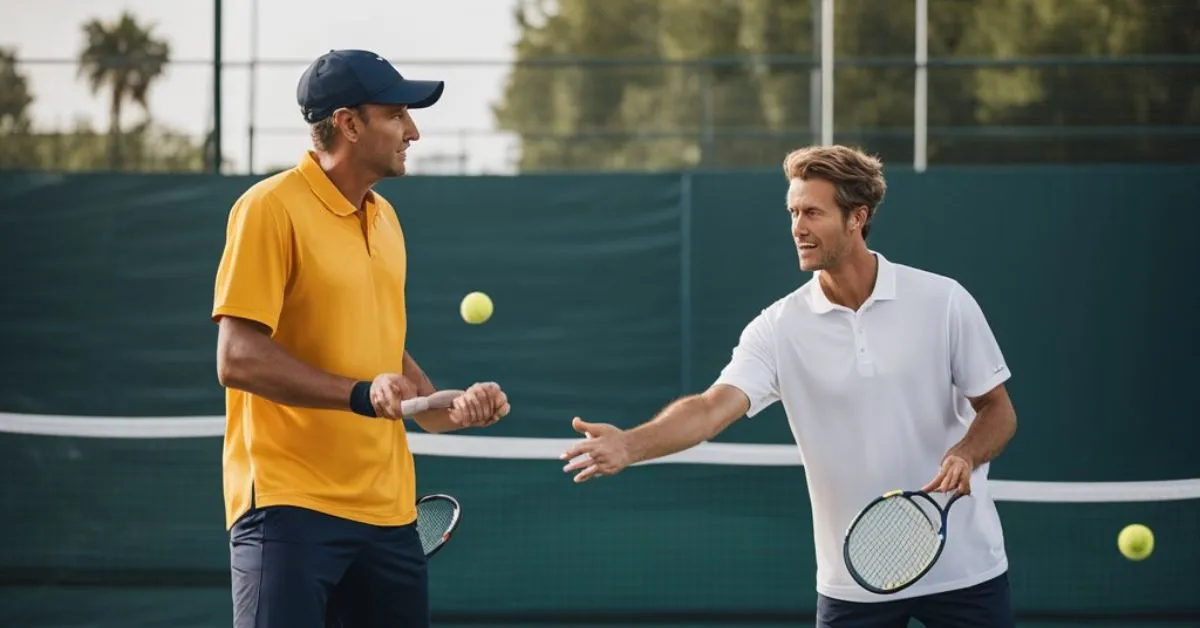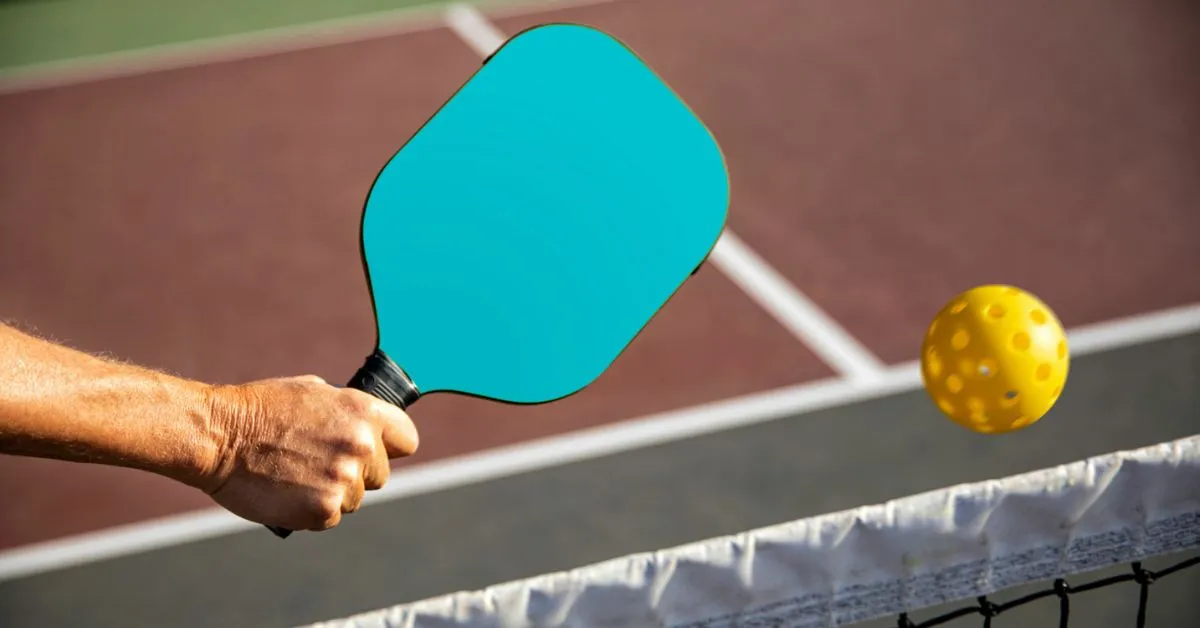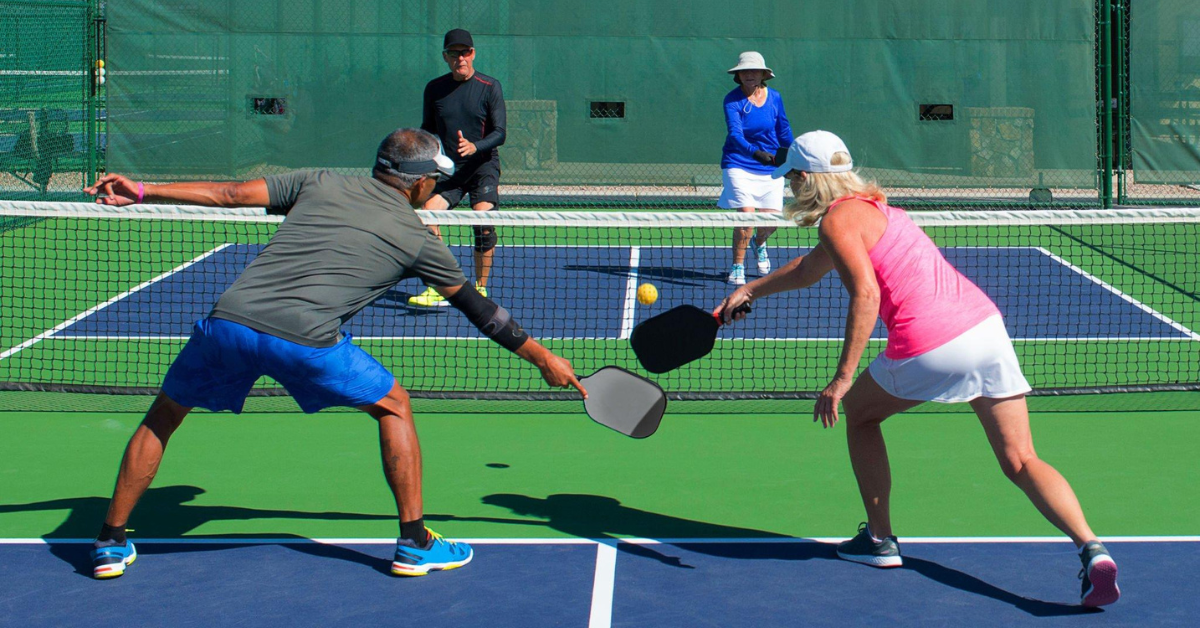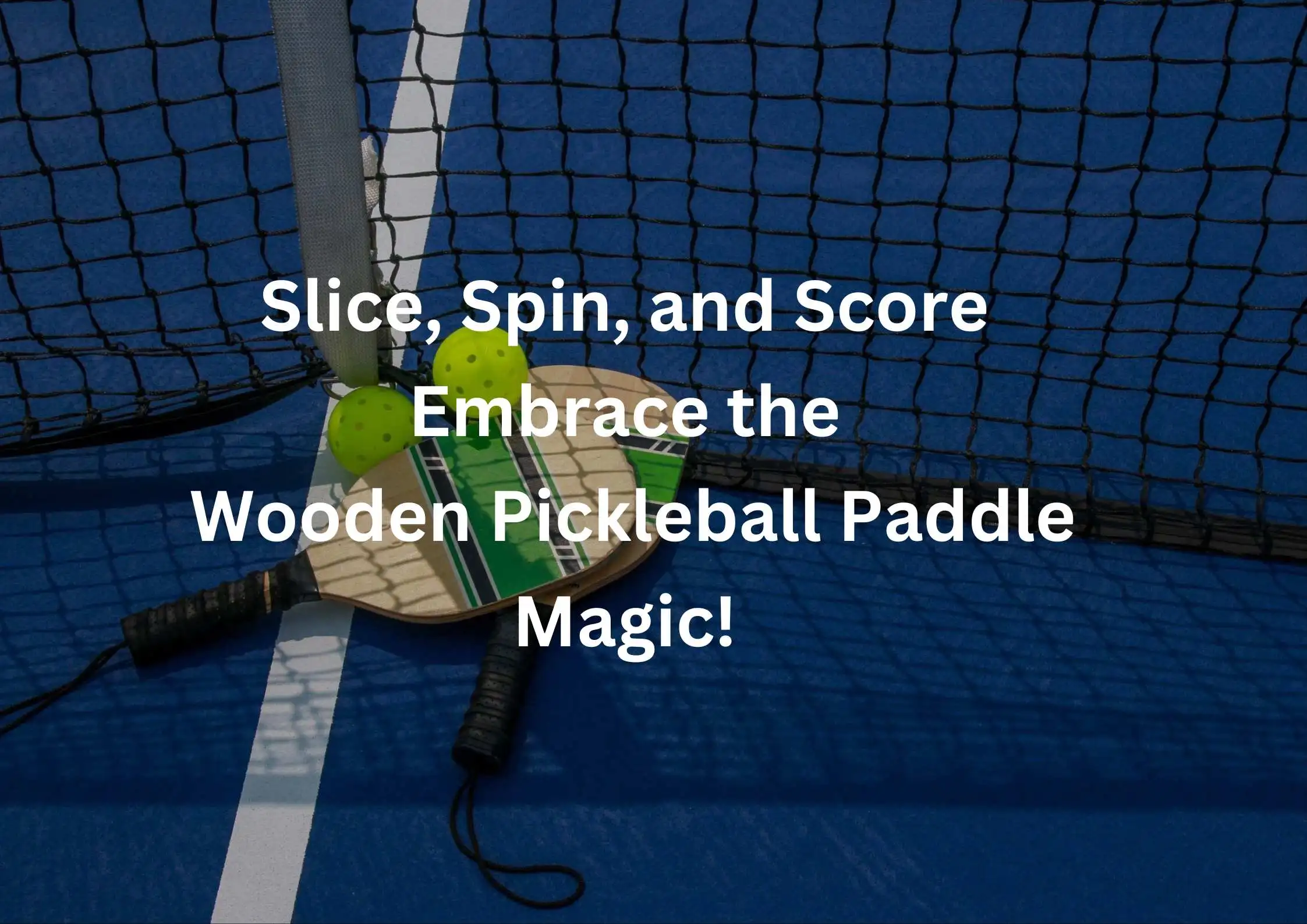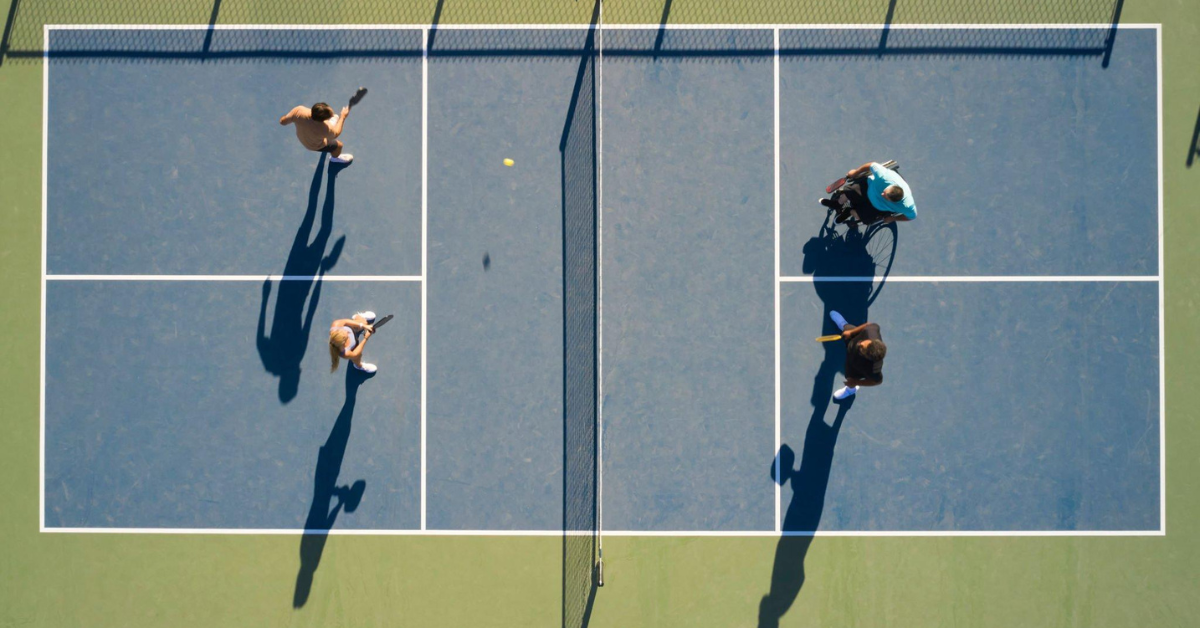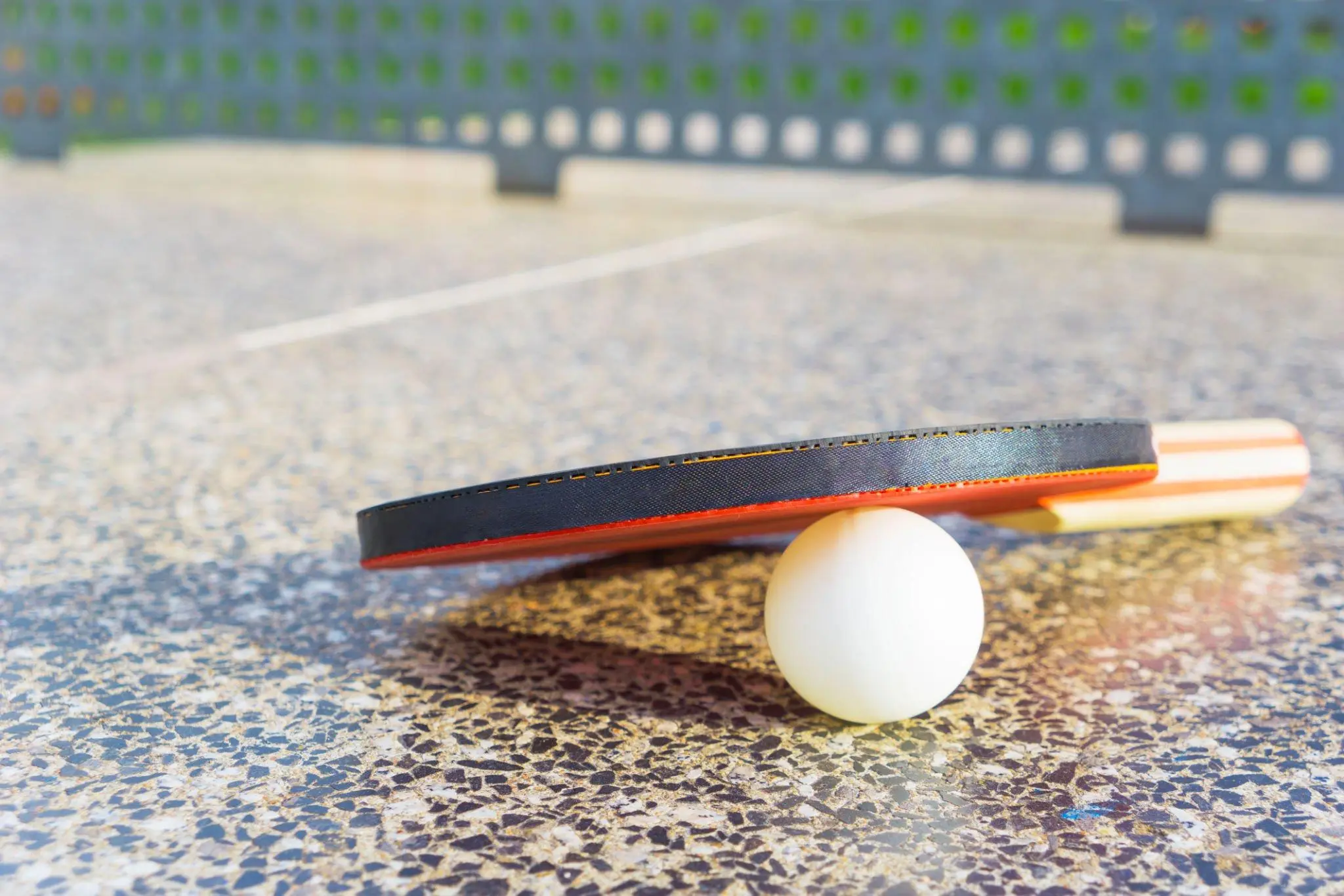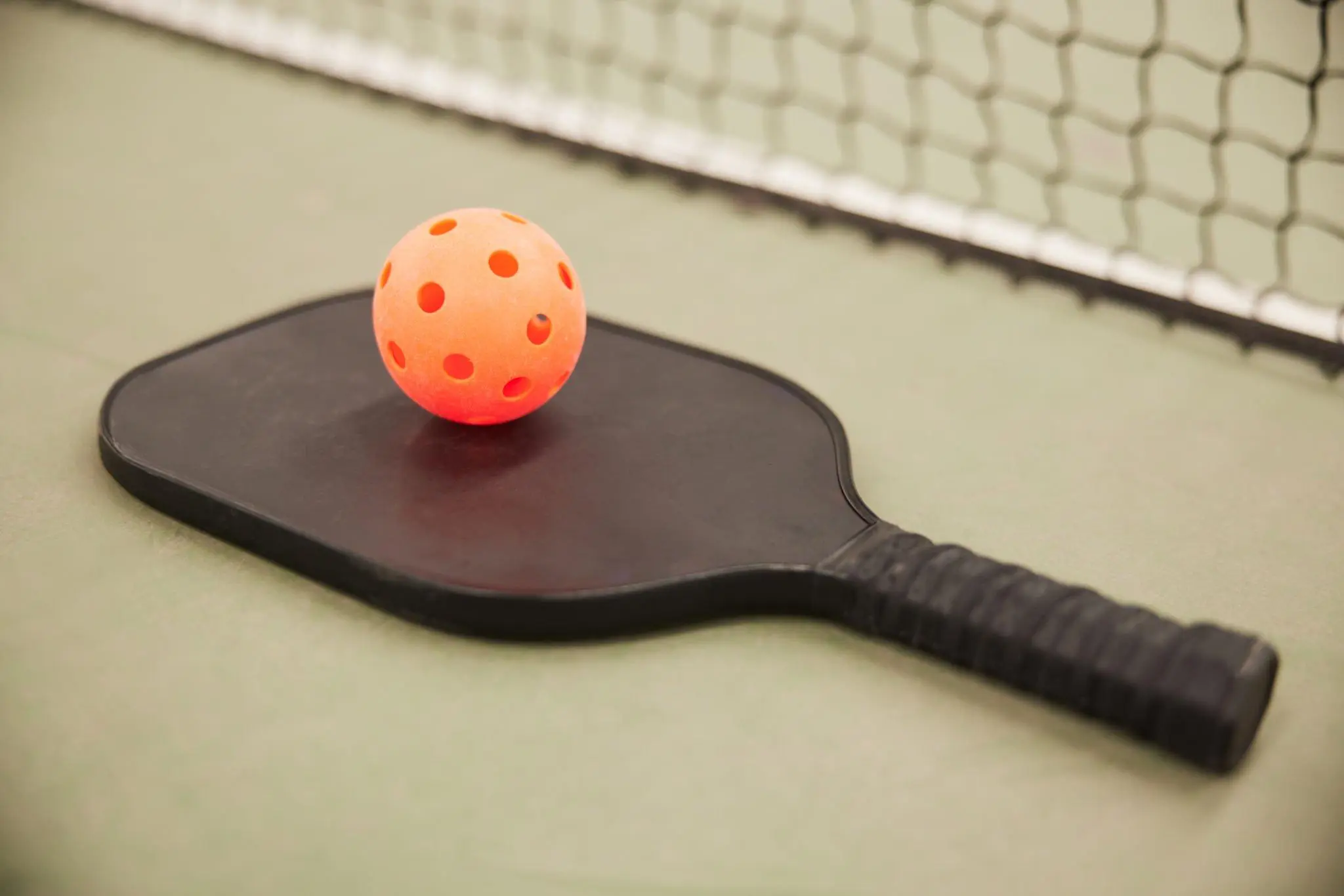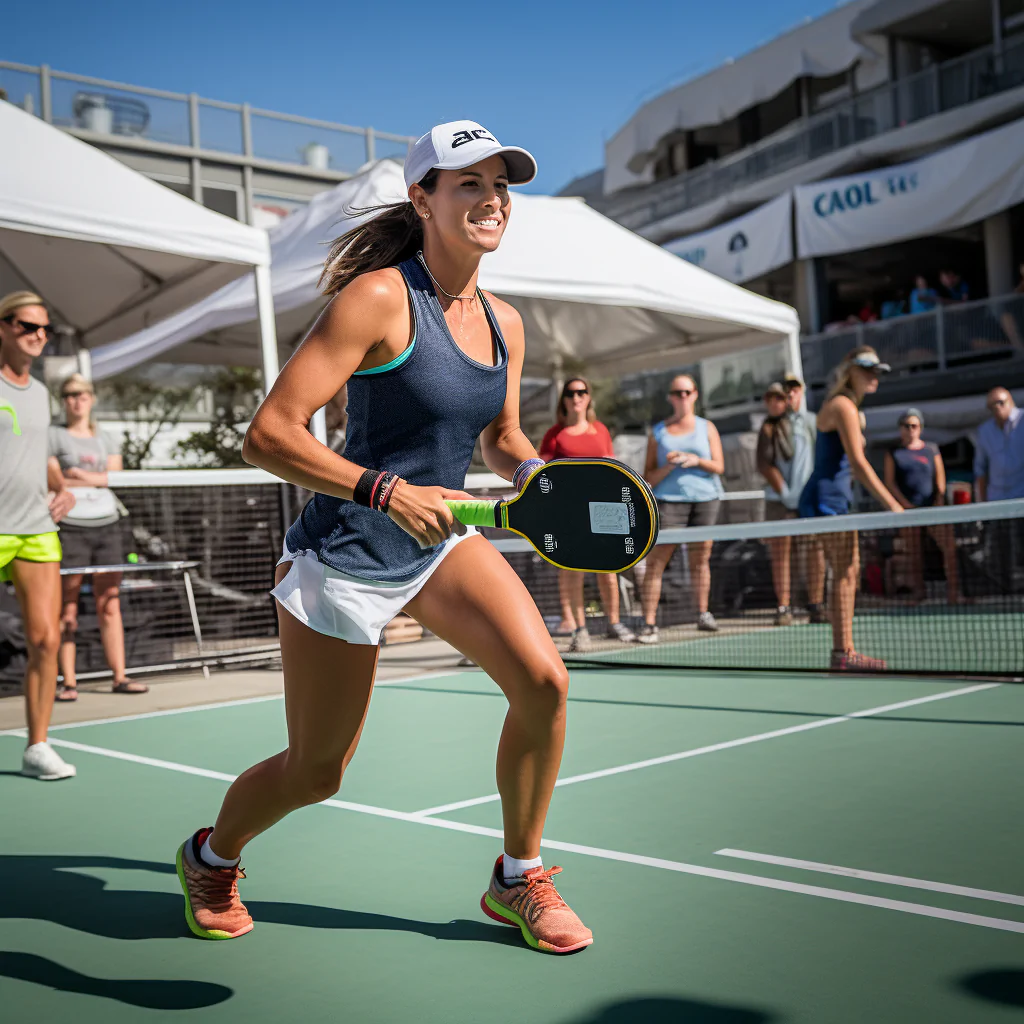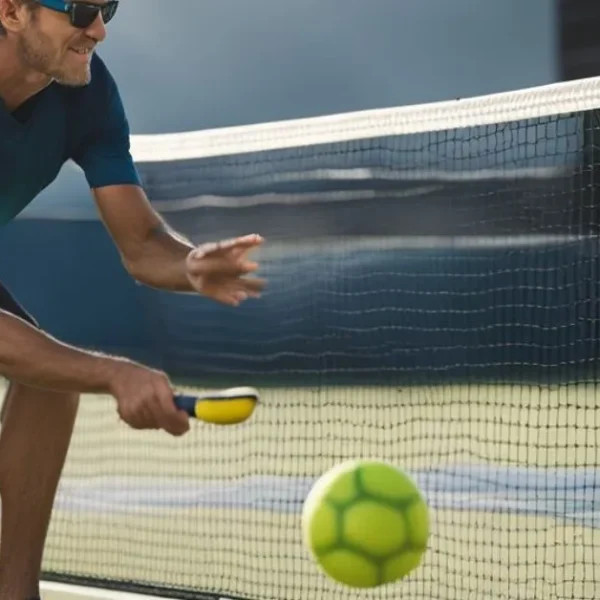One of the most important skills in pickleball is dinking. Dinking is a soft shot that barely clears the net and lands in the non-volley zone (also known as the kitchen) of the opponent’s court. Dinking is a crucial part of the pickleball strategy, as it allows you to control the pace of the game, create openings for more aggressive shots, and outsmart your opponents.
In this article, we will cover everything you need to know about pickleball dinking, from the basics to the advanced techniques. We will also provide you with some tips, drills, and common mistakes to avoid when dinking. By the end of this article, you will be able to master the art of dinking and win more points at the net.
What is Dinking?
Dinking is a soft shot that barely clears the net and lands in the non-volley zone of the opponent’s court. The non-volley zone is the area within 7 feet of the net on both sides of the court, where players are not allowed to hit the ball in the air (volley). The purpose of dinking is to keep the ball low and force your opponents to hit up, giving you an opportunity to attack or finish the point.
Dinking is usually done when all four players are at the net, engaged in a dink rally. A dink rally is a series of dinks exchanged between the players, until one player makes a mistake or hits an attackable ball. Dink rallies can last for several shots, and require patience, accuracy, and consistency.
Dinking can be done with either the forehand or the backhand, depending on the position and angle of the ball. Dinking can also be done with different types of spin, such as topspin, underspin, or sidespin, to add variety and difficulty to your shots.
Why is Dinking Important?
Dinking is important because it is a key component of the pickleball strategy. By dinking, you can:
- Control the pace of the game. Dinking slows down the game and prevents your opponents from hitting hard shots that can put you on the defensive. Dinking also allows you to dictate where the ball goes, and make your opponents move and adjust to your shots.
- Create openings for more aggressive shots. Dinking keeps the ball low and forces your opponents to hit up, exposing their feet and body to your attacks. By dinking, you can set up opportunities for smashes, volleys, or drop shots that can end the point in your favor.
- Outsmart your opponents. Dinking is a mental game, where you have to anticipate your opponents’ moves and react accordingly. By dinking, you can vary the depth, direction, and spin of your shots, and keep your opponents guessing and off balance. You can also exploit your opponents’ weaknesses, such as their weaker backhand, or their tendency to overhit or make errors.
The Dinking Mindset
Dinking is not just a physical skill, but also a mental one. To be a successful dinker, you need to have the right mindset and attitude. Here are some tips to help you develop the dinking mindset:
- Be patient. Dinking is not about hitting winners or ending the point quickly. It is about waiting for the right moment to strike, and not forcing the issue. Don’t get frustrated or bored by the long rallies, and don’t rush or panic when you are under pressure. Stay calm and focused, and enjoy the challenge of the dink game.
- Be aggressive. Being patient does not mean being passive or timid. You still need to be aggressive and assertive with your dinks, and not let your opponents take control of the rally. Hit your dinks with confidence and authority, and look for opportunities to attack or finish the point when they arise. Don’t be afraid to take risks or make mistakes, as long as you learn from them and improve your game.
- Be creative. Dinking is not about hitting the same shot over and over again. It is about being creative and unpredictable with your shots, and adding variety and difficulty to your dinks. Experiment with different types of dinks, such as deep, short, angled, or spinning dinks, and see how your opponents react to them. Mix up your dink spots, and move your opponents side to side, forward and backward, and in and out of the kitchen. Have fun and be playful with your dinks, and surprise your opponents with your shots.
Mastering the Fundamentals of Dinking
Before you can apply the dinking strategy, you need to master the fundamentals of dinking. These are the basic elements that make up a good dink, such as stance, paddle position, swing, and court position. Here are some tips to help you master the fundamentals of dinking:
Stance
Your stance is how you position your body and feet when you hit a dink. A good stance will help you balance, move, and hit your dinks with ease and accuracy. Here are some tips to help you improve your stance:
- Keep your feet shoulder-width apart, and slightly staggered, with your dominant foot slightly behind your non-dominant foot. This will give you stability and mobility, and allow you to shift your weight and pivot your hips when you hit your dinks.
- Bend your knees and lower your center of gravity. This will help you get under the ball and hit it at a comfortable height. It will also help you react and move faster to your opponents’ shots.
- Keep your body facing the net, and your shoulders parallel to the ground. This will help you align your body and paddle with the ball, and hit your dinks with more control and consistency.
Paddle Position
Your paddle position is how you hold and angle your paddle when you hit a dink. A good paddle position will help you prepare, contact, and follow through your dinks with ease and accuracy. Here are some tips to help you improve your paddle position:
- Keep your paddle up and in front of your body, at chest level or higher. This will help you get ready for any incoming shot, and reduce your reaction time and swing length. It will also help you hit your dinks with more power and control, as you will have more leverage and contact point with the ball.
- Keep your paddle face open, or slightly tilted upward, when you hit a dink. This will help you lift the ball over the net, and land it softly in the kitchen. It will also help you add some backspin to your dinks, which will make them harder to return by your opponents.
- Keep your grip relaxed, but firm, when you hit a dink. This will help you have more feel and touch with the ball, and avoid hitting it too hard or too soft. It will also help you adjust your paddle angle and spin according to the situation.
Swing
Your swing is how you move your arm and paddle when you hit a dink. A good swing will help you generate, transfer, and control the force and direction of your dinks. Here are some tips to help you improve your swing:
- Keep your swing short and compact, with minimal backswing and follow-through. This will help you hit your dinks with more accuracy and consistency, as you will have less room for error and variation. It will also help you hit your dinks faster and more efficiently, as you will have less wasted motion and energy.
- Keep your swing smooth and fluid, with a natural rhythm and flow. This will help you hit your dinks with more power and control, as you will have more momentum and coordination. It will also help you hit your dinks with more variety and difficulty, as you will be able to change the speed, spin, and direction of your shots.
- Keep your swing low to high, with a slight upward motion. This will help you hit your dinks with more lift and arc, and clear the net with ease. It will also help you hit your dinks with more depth and placement, and land them in the optimal spot in the kitchen.
Court Position
Your court position is where you stand and move on the court when you hit a dink. A good court position will help you cover, anticipate, and hit your dinks with ease and accuracy. Here are some tips to help you improve your court position:
- Keep your feet at the non-volley zone line, or as close as possible, when you hit a dink. This will help you take away the space and angles from your opponents, and force them to hit more difficult shots. It will also help you hit more aggressive and effective dinks, as you will be closer to the net and the ball.
- Keep your body in the middle of your court, or slightly to the side of your partner, when you hit a dink. This will help you cover the most area and protect the most vulnerable spots on your court, such as the middle and the sidelines. It will also help you hit more balanced and consistent dinks, as you will have more options and angles to hit your shots.
- Keep your eyes on the ball, and your head up, when you hit a dink. This will help you track the ball and its trajectory, and adjust your paddle and body accordingly. It will also help you read your opponents and their intentions, and anticipate their next shots. It will also help you communicate and coordinate with your partner, and work as a team.
Dinking Strategy
Once you have mastered the fundamentals of dinking, you can apply the dinking strategy to your game. The dinking strategy is how you use your dinks to create advantages and opportunities for yourself, and disadvantages and difficulties for your opponents. Here are some tips to help you improve your dinking strategy:
Varying the Depth
One of the simplest and most effective ways to improve your dinking strategy is to vary the depth of your dinks. By varying the depth, you can:
- Keep your opponents guessing and off balance, as they will have to adjust their paddle and body position, and their swing and contact point, for each shot.
- Create openings for more aggressive shots, as you can hit deeper dinks to push your opponents back, or hit shorter dinks to bring them in, and then hit a smash, volley, or drop shot over their heads or at their feet.
- Force your opponents to make errors, as they may hit the net, hit out, or pop up the ball, if they misjudge the depth of your dinks.
To vary the depth of your dinks, you need to:
- Adjust your paddle angle and swing speed, depending on how deep or short you want to hit your dinks. Generally, the more open your paddle face and the faster your swing, the deeper your dink will go. The more closed your paddle face and the slower your swing, the shorter your dink will go.
- Aim for different spots in the kitchen, depending on how deep or short you want to hit your dinks. Generally, the closer to the net and the sidelines, the shorter your dink will go. The closer to the baseline and the middle, the deeper your dink will go.
- Observe your opponents’ court position and reaction, and hit your dinks accordingly. Generally, the closer your opponents are to the net, the deeper you want to hit your dinks. The farther your opponents are from the net, the shorter you want to hit your dinks.
Moving Your Opponent Side to Side
Another simple and effective way to improve your dinking strategy is to move your opponent side to side. By moving your opponent side to side, you can:
- Keep your opponent guessing and off balance, as they will have to change their direction and footwork, and their paddle and body position, for each shot.
- Create openings for more aggressive shots, as you can hit angled dinks to create space on the court, or hit straight dinks to catch your opponent off guard, and then hit a smash, volley, or drop shot into the open court or at their body.
- Force your opponent to make errors, as they may hit the net, hit out, or pop up the ball, if they are out of position or out of reach for your dinks.
To move your opponent side to side, you need to:
- Adjust your paddle angle and swing direction, depending on how angled or straight you want to hit your dinks. Generally, the more perpendicular your paddle face and the more diagonal your swing, the more angled your dink will go. The more parallel your paddle face and the more vertical your swing, the more straight your dink will go.
- Aim for different spots in the kitchen, depending on how angled or straight you want to hit your dinks. Generally, the closer to the net and the sidelines, the more angled your dink will go. The closer to the baseline and the middle, the more straight your dink will go.
- Observe your opponent’s court position and reaction, and hit your dinks accordingly. Generally, the closer your opponent is to the middle, the more angled you want to hit your dinks. The farther your opponent is from the middle, the more straight you want to hit your dinks.
Adding Spin
Another way to improve your dinking strategy is to add spin to your dinks. By adding spin, you can:
- Keep your opponent guessing and off balance, as they will have to deal with the different bounce and trajectory of your dinks, and their paddle and body position, and their swing and contact point, for each shot.
- Create openings for more aggressive shots, as you can hit spinning dinks that are harder to return, or hit spinning dinks that set up your next shot, and then hit a smash, volley, or drop shot that takes advantage of the spin.
- Force your opponent to make errors, as they may hit the net, hit out, or pop up the ball, if they misread the spin of your dinks.
To add spin to your dinks, you need to:
- Adjust your paddle angle and swing motion, depending on what type of spin you want to add to your dinks. Generally, there are three types of spin you can add to your dinks: topspin, underspin, and sidespin.
- To add topspin, you need to brush the ball from low to high, with an upward motion, and a slightly closed paddle face. This will make the ball spin forward, and dip down and bounce up after it crosses the net.
- To add underspin, you need to brush the ball from high to low, with a downward motion, and a slightly open paddle face. This will make the ball spin backward, and float up and bounce low after it crosses the net.
- To add sidespin, you need to brush the ball from side to side, with a sideways motion, and a perpendicular paddle face. This will make the ball spin sideways, and curve and bounce away from the direction of the spin after it crosses the net.
- Aim for different spots in the kitchen, depending on what type of spin you want to add to your dinks. Generally, the closer to the net and the sidelines, the more effective your spin will be, as it will have more time and space to take effect. The closer to the baseline and the middle, the less effective your spin will be, as it will have less time and space to take effect.
- Observe your opponent’s court position and reaction, and hit your dinks accordingly. Generally, the closer your opponent is to the net, the more topspin you want to add to your dinks, as it will make them hit up or hit out. The farther your opponent is from the net, the more underspin you want to add to your dinks, as it will make them hit low or hit the net. The closer your opponent is to the middle, the more sidespin you want to add to your dinks, as it will make them hit wide or hit out. The farther your opponent is from the middle, the less sidespin you want to add to your dinks, as it will make them hit straight or hit the net.
Advanced Dinking
Once you have mastered the fundamentals and the strategy of dinking, you can move on to the advanced dinking techniques. These are the more complex and challenging ways to improve your dinking game, and gain an edge over your opponents. Here are some tips to help you learn the advanced dinking techniques:
Dinking in Front
One of the advanced dinking techniques is to dink in front of your body, instead of to the side. By dinking in front, you can:
- Keep your opponent guessing and off balance, as they will have a harder time reading your paddle angle and swing direction, and predicting where your dink will go.
- Create openings for more aggressive shots, as you can hit more deceptive and precise dinks, and then hit a smash, volley, or drop shot that catches your opponent off guard or out of position.
- Force your opponent to make errors, as they may hit the net, hit out, or pop up the ball, if they are fooled or surprised by your dinks.
To dink in front, you need to:
- Adjust your paddle angle and swing motion, depending on how angled or straight you want to hit your dinks. Generally, you need to use more wrist and forearm action, and less shoulder and elbow action, to hit your dinks in front. You also need to use more backspin and less topspin, to lift the ball over the net and land it softly in the kitchen.
- Aim for different spots in the kitchen, depending on how angled or straight you want to hit your dinks. Generally, the closer to the net and the sidelines, the more angled your dink will go. The closer to the baseline and the middle, the more straight your dink will go.
- Observe your opponent’s court position and reaction, and hit your dinks accordingly. Generally, the closer your opponent is to the middle, the more angled you want to hit your dinks. The farther your opponent is from the middle, the more straight you want to hit your dinks.
Giving Your Dink Shot Some Room
Another advanced dinking technique is to give your dink shot some room, instead of hitting it as soon as possible. By giving your dink shot some room, you can:
- Keep your opponent guessing and off balance, as they will have a harder time timing and anticipating your dinks, and adjusting their paddle and body position, and their swing and contact point, for each shot.
- Create openings for more aggressive shots, as you can hit more powerful and accurate dinks, and then hit a smash, volley, or drop shot that takes advantage of the extra time and space you have created.
- Force your opponent to make errors, as they may hit the net, hit out, or pop up the ball, if they are impatient or unprepared for your dinks.
To give your dink shot some room, you need to:
- Adjust your paddle angle and swing speed, depending on how much time and space you want to create for your dink shot. Generally, the more open your paddle face and the faster your swing, the more time and space you will create. The more closed your paddle face and the slower your swing, the less time and space you will create.
- Aim for different spots in the kitchen, depending on how much time and space you want to create for your dink shot. Generally, the closer to the net and the sidelines, the more time and space you will create. The closer to the baseline and the middle, the less time and space you will create.
- Observe your opponent’s court position and reaction, and hit your dinks accordingly. Generally, the closer your opponent is to the net, the more time and space you want to create for your dink shot. The farther your opponent is from the net, the less time and space you want to create for your dink shot.
Volleying Whenever Possible
Another advanced dinking technique is to volley whenever possible, instead of letting the ball bounce. By volleying, you can:
- Keep your opponent guessing and off balance, as they will have less time and space to react and adjust to your dinks, and their paddle and body position, and their swing and contact point, for each shot.
- Create openings for more aggressive shots, as you can hit more powerful and precise dinks, and then hit a smash, volley, or drop shot that takes advantage of the extra time and space you have gained.
- Force your opponent to make errors, as they may hit the net, hit out, or pop up the ball, if they are caught off guard or out of position by your dinks.
To volley whenever possible, you need to:
- Adjust your paddle angle and swing motion, depending on how high or low the ball is, and how angled or straight you want to hit your dinks. Generally, you need to use more wrist and forearm action, and less shoulder and elbow action, to hit your volleys. You also need to use more backspin and less topspin, to lift the ball over the net and land it softly in the kitchen.
- Aim for different spots in the kitchen, depending on how high or low the ball is, and how angled or straight you want to hit your dinks. Generally, the higher the ball is, the more angled your dink will go. The lower the ball is, the more straight your dink will go.
- Observe your opponent’s court position and reaction, and hit your dinks accordingly. Generally, the closer your opponent is to the net, the more angled you want to hit your dinks. The farther your opponent is from the net, the more straight you want to hit your dinks.
Hitting Pressure Points
Another advanced dinking technique is to hit pressure points, or the spots on the court that are the most difficult or uncomfortable for your opponent to hit. By hitting pressure points, you can:
- Keep your opponent guessing and off balance, as they will have to deal with the awkward angle and bounce of your dinks, and their paddle and body position, and their swing and contact point, for each shot.
- Create openings for more aggressive shots, as you can hit more deceptive and precise dinks, and then hit a smash, volley, or drop shot that exploits your opponent’s weakness or vulnerability.
- Force your opponent to make errors, as they may hit the net, hit out, or pop up the ball, if they are unable to handle your dinks.
To hit pressure points, you need to:
- Adjust your paddle angle and swing direction, depending on where your opponent’s pressure point is, and how angled or straight you want to hit your dinks. Generally, you need to use more wrist and forearm action, and less shoulder and elbow action, to hit your dinks. You also need to use more backspin and less topspin, to lift the ball over the net and land it softly in the kitchen.
- Aim for different spots in the kitchen, depending on where your opponent’s pressure point is, and how angled or straight you want to hit your dinks. Generally, the closer to the net and the sidelines, the more angled your dink will go. The closer to the baseline and the middle, the more straight your dink will go.
- Observe your opponent’s court position and reaction, and hit your dinks accordingly. Generally, your opponent’s pressure point will depend on their skill level, hand dominance, paddle preference, and personal style. For example, some common pressure points are:
- The backhand side, especially for weaker or less experienced players, who may have less confidence and control with their backhand dinks.
- The forehand side, especially for stronger or more experienced players, who may have more power and spin with their forehand dinks, but also more tendency to overhit or make errors.
- The middle, especially for doubles players, who may have less communication and coordination with their partner, and more confusion and hesitation about who should hit the ball.
- The feet, especially for taller or less agile players, who may have more difficulty bending down and reaching low for the ball.
- The body, especially for smaller or less mobile players, who may have more difficulty moving away and creating space for the ball.
Forcing Dead Dinks
Another advanced dinking technique is to force dead dinks, or the dinks that are so low and soft that they are impossible or very difficult to return. By forcing dead dinks, you can:
- Keep your opponent guessing and off balance, as they will have to deal with the low and soft bounce and trajectory of your dinks, and their paddle and body position, and their swing and contact point, for each shot.
- Create openings for more aggressive shots, as you can hit more powerful and precise dinks, and then hit a smash, volley, or drop shot that takes advantage of the dead dink situation.
- Force your opponent to make errors, as they may hit the net, hit out, or pop up the ball, if they are unable to return your dinks.
To force dead dinks, you need to:
- Adjust your paddle angle and swing speed, depending on how low and soft you want to hit your dinks. Generally, you need to use more wrist and forearm action, and less shoulder and elbow action, to hit your dinks. You also need to use more backspin and less topspin, to lift the ball over the net and land it softly in the kitchen.
- Aim for different spots in the kitchen, depending on how low and soft you want to hit your dinks. Generally, the closer to the net and the sidelines, the lower and softer your dink will go. The closer to the baseline and the middle, the higher and harder your dink will go.
- Observe your opponent’s court position and reaction, and hit your dinks accordingly. Generally, the closer your opponent is to the net, the lower and softer you want to hit your dinks. The farther your opponent is from the net, the higher and harder you want to hit your dinks.
Working with Your Partner as a Team
The final and most important aspect of dinking is to work with your partner as a team, especially in doubles pickleball. By working with your partner as a team, you can:
- Keep your opponents guessing and off balance, as they will have to deal with the different styles and strategies of you and your partner, and their paddle and body position, and their swing and contact point, for each shot.
- Create openings for more aggressive shots, as you can hit more coordinated and effective dinks, and then hit a smash, volley, or drop shot that takes advantage of the teamwork situation.
- Force your opponents to make errors, as they may hit the net, hit out, or pop up the ball, if they are unable to handle your dinks.
To work with your partner as a team, you need to:
- Communicate with your partner, before, during, and after each point. You need to talk to your partner about your game plan, your strengths and weaknesses, your preferences and tendencies, and your signals and cues. You also need to encourage, compliment, and support your partner, and give constructive feedback and suggestions.
- Coordinate with your partner, in terms of your court position, paddle position, and shot selection. You need to move and adjust together, and cover and protect each other. You also need to hit and return together, and set up and finish each other.
- Complement your partner, in terms of your skill level, hand dominance, paddle preference, and personal style. You need to balance and match each other, and bring out the best in each other. You also need to vary and mix your dinks, and add variety and difficulty to your shots.
Pickleball Dinking Drills
In this section, we will introduce some pickleball dinking drills that you can practice with your partner or friends to improve your dinking skills. These drills will help you master the fundamentals, the strategy, and the advanced techniques of dinking, and make you a better dinker.
Dink to Dink Drill
This drill is to practice the basic dink shot with your partner. You and your partner stand at the non-volley zone line, and hit dinks back and forth, aiming for the middle of the kitchen. You can start with forehand dinks, then switch to backhand dinks, then mix them up. The goal is to hit as many consecutive dinks as possible, without making errors or hitting attackable balls.
Dink to Target Drill
This drill is to practice the varied dink shot with your partner. You and your partner stand at the non-volley zone line, and hit dinks back and forth, aiming for different targets in the kitchen. You can use cones, balls, or other objects as targets, and place them at different spots, such as deep, short, angled, or straight. The goal is to hit as many targets as possible, without making errors or hitting attackable balls.
Dink to Win Drill
This drill is to practice the advanced dink shot with your partner. You and your partner stand at the non-volley zone line, and hit dinks back and forth, aiming for the pressure points of your opponents. You can use your partner’s weaker hand, feet, body, or middle as pressure points, and try to hit them with your dinks. The goal is to force your partner to make errors or hit attackable balls, and then win the point.
Pickleball Dinking Tips
In this section, we will provide some pickleball dinking tips that you can apply to your game to improve your dinking performance. These tips will help you enhance your dinking technique, strategy, and mindset, and make you a smarter and more effective dinker.
Keep your paddle up
One of the most important tips for dinking is to keep your paddle up and in front of your body, at chest level or higher. This will help you prepare for any incoming shot, and reduce your reaction time and swing length. It will also help you hit your dinks with more power and control, as you will have more leverage and contact point with the ball.
Use spin
One of the most effective tips for dinking is to use spin on your dinks, such as topspin, underspin, or sidespin. This will help you lift the ball over the net, and land it softly in the kitchen. It will also help you add more bounce and curve to your dinks, and make them harder to return by your opponents. To use spin, you need to brush the ball with your paddle, and use more wrist and forearm action.
Work with your partner
One of the most important tips for dinking is to work with your partner as a team, especially in doubles pickleball. This will help you cover, anticipate, and hit your dinks with ease and accuracy. It will also help you communicate, coordinate, and complement your partner, and work as a unit. To work with your partner, you need to talk, move, and hit together, and balance, match, and vary your dinks.
Pickleball Dinking Common Mistakes
In this section, we will identify some pickleball dinking common mistakes that you should avoid in your game to improve your dinking performance. These mistakes will hinder your dinking technique, strategy, and mindset, and make you a weaker and less effective dinker.
Hitting too hard
One of the most common mistakes for dinking is to hit the ball too hard, either intentionally or unintentionally. This will make your dinks go too high or too long, and give your opponents an easy opportunity to attack or finish the point. To avoid hitting too hard, you need to relax your grip, shorten your swing, and use more touch and feel.
Hitting too soft
Another common mistake for dinking is to hit the ball too soft, either intentionally or unintentionally. This will make your dinks go too low or too short, and give your opponents an easy opportunity to attack or finish the point. To avoid hitting too soft, you need to firm up your grip, lengthen your swing, and use more power and speed.
Hitting too high
The third common mistake for dinking is to hit the ball too high, either intentionally or unintentionally. This will make your dinks go over the net, but also over the kitchen, and give your opponents an easy opportunity to attack or finish the point. To avoid hitting too high, you need to lower your paddle position, shorten your swing, and use more touch and feel.
Pickleball Dinking Strategies for Beginners
In this section, we will introduce some pickleball dinking strategies for beginners that you can use to improve your dinking game. These strategies will help you learn the basics of dinking, such as the fundamentals, the strategy, and the mindset, and make you a better dinker.
Learn the basics
The first and most important strategy for beginners is to learn the basics of dinking, such as the stance, paddle position, swing, and court position. You need to practice these fundamentals until they become second nature, and you can hit consistent and accurate dinks without thinking too much. You can use the dink to dink drill, or other similar drills, to improve your basic dinking skills.
Be patient
The second and most important strategy for beginners is to be patient with your dinks, and not rush or panic when you are under pressure. You need to wait for the right moment to strike, and not force the issue. You also need to enjoy the challenge of the dink game, and not get frustrated or bored by the long rallies.
Learn the strategy
The third and most important strategy for beginners is to learn the strategy of dinking, such as varying the depth, moving your opponent side to side, and adding spin. You need to use your dinks to create advantages and opportunities for yourself, and disadvantages and difficulties for your opponents. You also need to observe your opponents’ court position and reaction, and hit your dinks accordingly.
Pickleball Dinking Strategies for Intermediate Players
In this section, we will introduce some pickleball dinking strategies for intermediate players that you can use to improve your dinking game. These strategies will help you improve your dinking skills, such as the fundamentals, the strategy, and the advanced techniques, and make you a better dinker.
Vary your dinks
The next strategy for intermediate players is to vary your dinks, such as the depth, direction, and spin. You need to add more variety and difficulty to your dinks, and keep your opponents guessing and off balance. You can use the dink to target drill, or other similar drills, to improve your varied dinking skills.
Be aggressive
The next strategy for intermediate players is to be aggressive with your dinks, and not be passive or timid. You need to look for opportunities to attack or finish the point, and not let your opponents take control of the rally. You also need to take risks or make mistakes, as long as you learn from them and improve your game.
Use advanced techniques
The final strategy for intermediate players is to use advanced techniques, such as dinking in front, giving your dink shot some room, volleying whenever possible, hitting pressure points, and forcing dead dinks. You need to use more complex and challenging ways to improve your dinking game, and gain an edge over your opponents. You can use the dink to win drill, or other similar drills, to improve your advanced dinking skills.
Pickleball Dinking Strategies for Advanced Players
In this section, we will introduce some pickleball dinking strategies for advanced players that you can use to improve your dinking game. These strategies will help you master your dinking skills, such as the fundamentals, the strategy, and the advanced techniques, and make you a better dinker.
Master the fundamentals
The first and most important strategy for advanced players is to master the fundamentals of dinking, such as the stance, paddle position, swing, and court position. You need to perfect these fundamentals, and hit consistent and accurate dinks without any flaws or weaknesses. You can use the dink to dink drill, or other similar drills, to improve your fundamental dinking skills.
Master the strategy
The next strategy for advanced players is to master the strategy of dinking, such as varying the depth, moving your opponent side to side, and adding spin. You need to master these strategies, and hit varied and difficult dinks without any errors or predictability. You can use the dink to target drill, or other similar drills, to improve your strategic dinking skills.
Master the advanced techniques
The final strategy for advanced players is to master the advanced techniques of dinking, such as dinking in front, giving your dink shot some room, volleying whenever possible, hitting pressure points, and forcing dead dinks. You need to master these techniques, and hit complex and challenging dinks without any hesitation or hesitation. You can use the dink to win drill, or other similar drills, to improve your advanced dinking skills.
To master the advanced techniques of dinking, you need to:
- Learn the benefits and drawbacks of each technique, and when and how to use them effectively. You need to understand the pros and cons of each technique, and the situations and scenarios where they are most suitable or unsuitable. You also need to practice the paddle angle, swing motion, and shot placement for each technique, and make them smooth and natural.
- Experiment with different combinations and variations of each technique, and see how they affect your dinks and your opponents’ reactions. You need to try different types and amounts of spin, depth, direction, and power for each technique, and see how they change the bounce and curve of your dinks, and how they make your dinks more or less predictable or difficult. You also need to observe how your opponents respond to your dinks, and how they adjust their court position, paddle position, and shot selection.
- Have fun and be playful with each technique, and surprise your opponents with your dinks. You need to enjoy the challenge and the fun of the dink game, and not take it too seriously or personally. You also need to be creative and unpredictable with your dinks, and catch your opponents off guard or out of position.
Conclusion
Dinking is one of the most important skills in pickleball, as it allows you to control the pace of the game, create openings for more aggressive shots, and outsmart your opponents. To master the art of dinking, you need to master the fundamentals, the strategy, and the advanced techniques of dinking. You also need to work with your partner as a team, and develop the right mindset and attitude for dinking. By following the tips, drills, and common mistakes in this article, you will be able to improve your dinking game, and win more points at the net.
FAQs
What are the best pickleball dink strategies?
The best pickleball dink strategies are to vary the depth, direction, and spin of your dinks, and to move your opponent side to side, forward and backward, and in and out of the kitchen. You also need to use advanced techniques, such as dinking in front, giving your dink shot some room, volleying whenever possible, hitting pressure points, and forcing dead dinks. You also need to work with your partner as a team, and communicate, coordinate, and complement each other.
How do I improve my pickleball dinking?
To improve your pickleball dinking, you need to practice the fundamentals, such as the stance, paddle position, swing, and court position. You also need to practice the strategy, such as varying the depth, direction, and spin of your dinks, and moving your opponent side to side. You also need to practice the advanced techniques, such as dinking in front, giving your dink shot some room, volleying whenever possible, hitting pressure points, and forcing dead dinks. You also need to practice with your partner as a team, and communicate, coordinate, and complement each other.
How do I practice dinking in pickleball?
Practice dinking in pickleball by finding a practice partner, practicing in a consistent area, using a consistent ball, hitting the ball low and under the net, hitting the ball with backspin, hitting the ball with a controlled swing, hitting the ball with a variety of trajectories, practicing dinking while moving, and practicing dinking under pressure.
How do I hit a deep dink in pickleball?
To hit a deep dink in pickleball, stay low, use a backspin stroke, and hit the ball with a short swing. Aim for the kitchen line or even outside of the kitchen line.
How do I hit a short dink in pickleball?
To hit a short dink in pickleball, stay low and use a short swing to hit the ball with backspin. Aim for the kitchen line or even inside the kitchen line.
How do I hit a hard dink in pickleball?
To hit a hard dink in pickleball, stay low, swing hard with a firm wrist, and hit the ball with backspin. Aim for the kitchen line or even inside the kitchen line.
How do I hit a topspin dink in pickleball?
To hit a topspin dink in pickleball, use a continental grip, drop your paddle down to waist height, brush the back of the ball, aim for the kitchen line, follow through, and practice regularly.
How do I force my opponent into a dead dink in pickleball?
To force your opponent into a dead dink in pickleball, hit deep, high, and slow-moving dinks to their backhand, or to the edges of the court. You can also vary your placement and use backspin to make it more difficult for them to return the ball.
